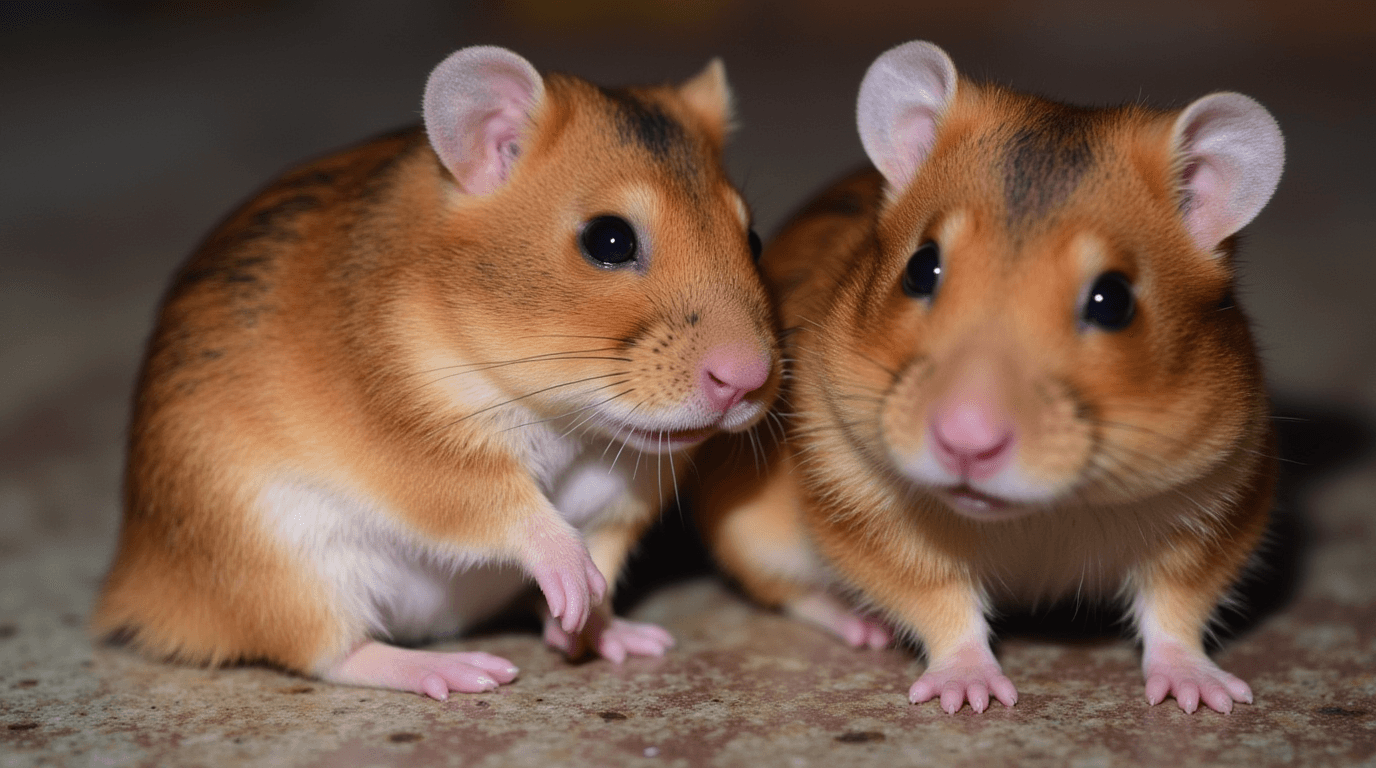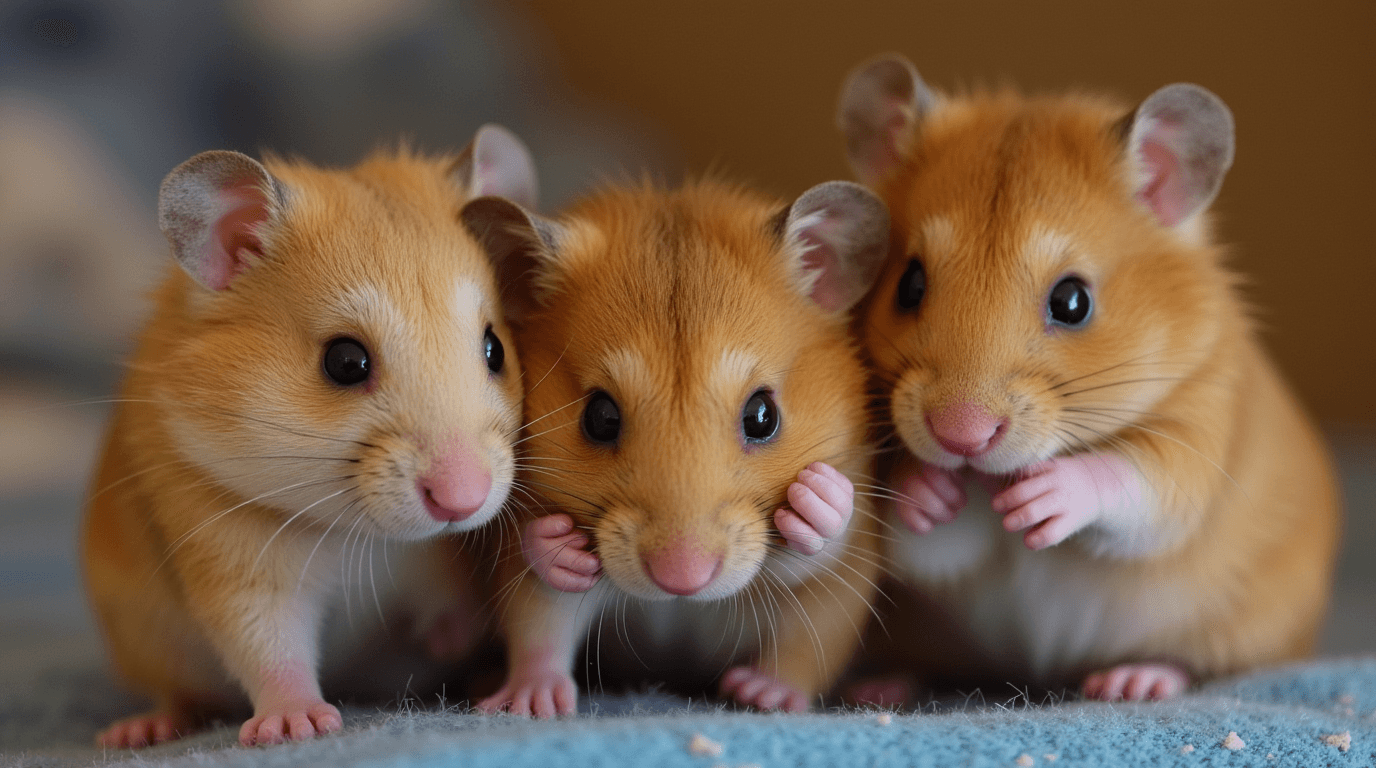Introduction:
Dwarf hamsters are among the most adorable and popular small pets you can own. These tiny creatures, with their fluffy coats and curious nature, have charmed the hearts of pet lovers around the world. Whether you’re a first-time pet owner or an experienced hamster enthusiast, this guide will help you understand how to care for these delightful pets, from setting up their cage to ensuring their well-being throughout their lifespan.

- What is a Dwarf Hamster?
- Setting Up the Perfect Dwarf Hamster Cage
- How Long Do Dwarf Hamsters Live?
- Are Dwarf Hamsters a Good Pet for You?
- Social Behavior of Different Species
- Dwarf Hamster vs. Syrian Hamster: Which is Better?
- Common Mistakes to Avoid With Dwarf Hamsters
- How to Care for a Dwarf Hamster
- Conclusion
- FAQ:
- Are dwarf hamsters a good pet?
- Should I get 1 or 2 dwarf hamsters?
- Do dwarf hamsters like being held?
- What not to do with a dwarf hamster?
- Do dwarf hamster bites hurt?
- How do I make my dwarf hamster happy?
- What do dwarf hamsters love?
- How to stop hamster biting cage at night?
- How do you tell if your hamster likes you?
- Are male or female dwarf hamsters more friendly?
What is a Dwarf Hamster?
Dwarf hamsters are small rodents that belong to the family Cricetidae, and they are typically smaller than other hamster species, like the Syrian hamster. Common species include Roborovski, Campbell, and Winter White dwarf hamsters, each known for their distinct characteristics.
These hamsters are tiny—usually around 2 to 4 inches long—and have a lifespan of about 2 to 3 years. What makes them popular pets is their playful, inquisitive nature. Despite their small size, dwarf hamsters are active animals that love to explore, burrow, and engage with their environment.
Originally from desert regions of Mongolia, China, and Russia, dwarf hamsters have adapted well to domestic life, making them an excellent choice for those looking for a low-maintenance but engaging pet.
Setting Up the Perfect Dwarf Hamster Cage
When it comes to keeping a dwarf hamster, their cage is their sanctuary, and it’s essential to get this right. A proper cage setup ensures they stay healthy and happy, giving them enough space to roam and play.
Ideal Cage Size and Types
Although dwarf hamsters are small, they still need a spacious cage to move around and express their natural behaviors. A minimum of 450 square inches of floor space is recommended for a single dwarf hamster. Wire cages with solid plastic bases, glass aquariums, or plastic habitats are popular choices.
Ensure the cage bars are narrow enough to prevent escape. Dwarf hamsters are expert escape artists and can squeeze through surprisingly small spaces, so a well-secured habitat is essential.
Essential Cage Accessories
To keep your hamster happy, the cage needs to be filled with engaging accessories. Start with a good quality bedding, such as aspen or paper-based options. Avoid pine or cedar shavings as they can be harmful to their respiratory system. Provide an exercise wheel (at least 6.5 inches in diameter) to ensure your hamster stays active.
Incorporate tunnels, hideouts, and chew toys to stimulate your hamster’s mind and prevent boredom. Hamsters love to burrow, so a deep layer of bedding will let them dig to their heart’s content.
Safety Tips for Hamster Cages
Safety is paramount when choosing your hamster’s cage and accessories. Avoid fluffy or cotton bedding that can cause blockages if swallowed. Also, make sure the cage is away from drafts, direct sunlight, and extreme temperatures. A happy hamster is a safe and comfortable one!
How Long Do Dwarf Hamsters Live?
The average lifespan of a dwarf hamster is 2 to 3 years, though some may live a little longer with optimal care. Factors like genetics, diet, exercise, and regular health checks can significantly impact their longevity.
Health Tips to Extend Lifespan
To give your hamster the best chance of living a long, healthy life, ensure they receive a balanced diet, regular exercise, and a clean environment. A high-quality hamster food mix, supplemented with occasional fresh vegetables, will keep them in top shape. Regular cage cleaning also prevents diseases and infections, ensuring they remain healthy and happy.

Are Dwarf Hamsters a Good Pet for You?
Dwarf hamsters are wonderful pets, but they’re not for everyone. Before deciding to get one, consider their unique characteristics and whether they suit your lifestyle.
Pros of Owning a Dwarf Hamster
One of the most appealing aspects of dwarf hamsters is their low-maintenance nature. They don’t require large spaces and are relatively easy to care for. Additionally, their small size and gentle demeanor make them ideal for small homes or apartments.
Their curious and playful personalities can provide endless entertainment, and they don’t require constant attention, making them suitable for people with busy lifestyles.
Cons of Owning a Dwarf Hamster
However, dwarf hamsters can also be fragile and are best suited for older children or adults. They are nocturnal, which means they may be more active at night, potentially disrupting your sleep if their cage is in your bedroom. Additionally, their short lifespan can be difficult for some pet owners to handle.
Should You Get 1 or 2 Dwarf Hamsters?
Deciding whether to get one or two dwarf hamsters depends on their species and temperament. Some dwarf hamsters are more sociable than others.
Social Behavior of Different Species
Species like Roborovski and Campbell’s dwarf hamsters are known to be more social and can live together in pairs or small groups, provided they are introduced at a young age. However, even with social species, you must monitor them closely for signs of fighting or territorial aggression.
Winter White hamsters, on the other hand, tend to be more solitary. If you’re unsure whether your hamster would prefer companionship, it’s always safer to start with one.
Introducing a Second Hamster
If you do decide to get two hamsters, make sure you introduce them gradually. Provide a large enough cage to prevent territorial disputes, and always have a backup plan in case they don’t get along.
Dwarf Hamster vs. Syrian Hamster: Which is Better?
Hamster enthusiasts often debate which is better: a dwarf hamster or a Syrian hamster. Both have their advantages, so it depends on what you’re looking for in a pet.
Size and Appearance Comparison
Dwarf hamsters are significantly smaller than Syrian hamsters, which can grow up to 6 inches long. Syrians are typically easier to handle because of their larger size, but dwarf hamsters are more active and fun to watch.
Personality and Care Requirements
Syrian hamsters are generally more laid-back, while dwarf hamsters are energetic and curious. If you’re looking for a hamster that enjoys being held and handled, a Syrian may be a better choice. However, if you prefer watching an active pet in their environment, a dwarf hamster is ideal.
Common Mistakes to Avoid With Dwarf Hamsters
While dwarf hamsters are relatively easy to care for, some common mistakes can affect their well-being.
Unsafe Foods and Products
Never give your hamster foods that are toxic to them, such as citrus fruits, onions, garlic, and chocolate. Always check that the toys and bedding materials are safe for hamsters.
Improper Handling Techniques
Dwarf hamsters are delicate and can be easily injured if handled improperly. Always approach your hamster slowly and support their entire body when picking them up.
How to Care for a Dwarf Hamster
Feeding Tips
Dwarf hamsters thrive on a balanced diet of commercial hamster food, supplemented with small amounts of fresh fruits and vegetables. Avoid giving them sugary treats, as hamsters can be prone to diabetes.
Cleaning and Maintenance
Cleaning the cage once a week and spot-cleaning daily will keep your hamster healthy. Replace soiled bedding and clean all accessories regularly to prevent the buildup of bacteria.

Conclusion
Dwarf hamsters are delightful pets that bring joy to any household. They may be small, but their personalities are big, offering endless entertainment and companionship. With proper care, they can live a healthy and happy life, providing you with many memorable moments. If you’re ready for a playful, low-maintenance pet, a dwarf hamster might be the perfect addition to your family!
FAQ:
Are dwarf hamsters a good pet?
Dwarf Hamsters make exceptional pets, blending charm with minimal upkeep. Their compact size and playful nature suit small spaces and busy lifestyles. These nocturnal creatures thrive in enriched habitats, showcasing boundless energy and curiosity. With proper care, Dwarf Hamsters become delightful companions, offering a unique glimpse into the fascinating world of tiny, spirited mammals.
Should I get 1 or 2 dwarf hamsters?
When deciding between one or two Dwarf Hamsters, consider their species and temperament. While some thrive in pairs, others prefer solitude to avoid territorial disputes. Proper introductions and a spacious habitat can help pairs coexist peacefully. Observing individual preferences ensures happy, healthy Dwarf Hamsters suited to their unique social needs.
Do dwarf hamsters like being held?
Dwarf Hamsters can enjoy being held, but trust and patience are essential. These delicate creatures often feel vulnerable when handled. Gradual, gentle interactions help them adapt and build confidence. Always approach with care, allowing Dwarf Hamsters to feel secure, and soon their endearing personalities will shine during these bonding moments.
What not to do with a dwarf hamster?
Handle Dwarf Hamsters with patience and care, ensuring their environment promotes both safety and happiness. Avoid placing their cage in direct sunlight or drafts, as extreme temperatures can be harmful. Providing appropriate care ensures these delightful creatures thrive and remain healthy companions.
Do dwarf hamster bites hurt?
While Dwarf Hamsters rarely bite, when they do, the bite may feel like a sharp pinch rather than significant pain. Their tiny teeth can break the skin but often cause minimal discomfort. Gently handling them builds trust, reducing the likelihood of nips.
How do I make my dwarf hamster happy?
To make Dwarf Hamsters happy, enrich their habitat with tunnels, wheels, and chew toys to stimulate natural behaviors. Provide a balanced diet with fresh vegetables and protein treats. Regular, gentle interaction builds trust and keeps them content. A clean, spacious environment ensures their health and happiness.
What do dwarf hamsters love?
Dwarf Hamsters love exploring tunnels, burrowing into soft bedding, and nibbling on chew toys. They thrive on a varied diet that includes seeds, grains, and fresh vegetables. Gentle handling and interactive playtime foster trust and happiness. A quiet, enriched environment with plenty of hiding spots delights these curious and active little companions.
How to stop hamster biting cage at night?
To stop Dwarf Hamsters from biting their cage at night, provide chew toys to satisfy their instinct to gnaw. Ensure their habitat is spacious and enriched with tunnels and activities. A lack of stimulation or proper care often triggers this behavior, so regular interaction and a well-maintained environment are essential.
How do you tell if your hamster likes you?
You can tell if Dwarf Hamsters like you through their body language. Signs include approaching you willingly, climbing onto your hand, or staying calm during handling. Gentle squeaks or relaxed grooming in your presence also indicate trust. Building a bond takes time, but these affectionate behaviors show they feel safe with you.
Are male or female dwarf hamsters more friendly?
When comparing male and female Dwarf Hamsters, males are often considered more docile and friendly, making them easier to handle. Females, while active and curious, can sometimes be more territorial. Individual personality plays a significant role, so spending time with them helps you choose a hamster that best matches your preferences.
Share your thoughts in the comments below! If you enjoyed this post, consider subscribing to our newsletter for more pet tips, stories and blogs!
